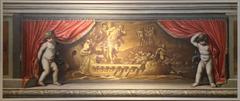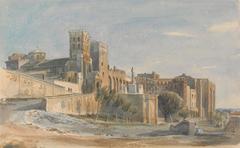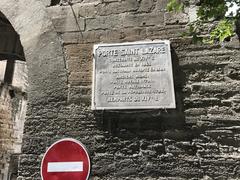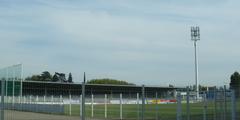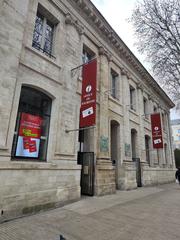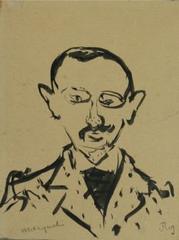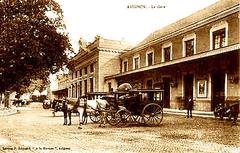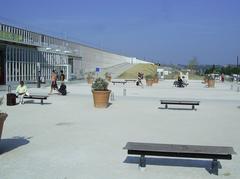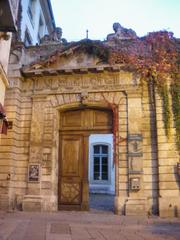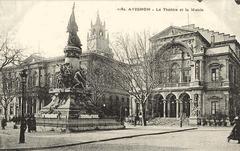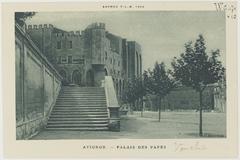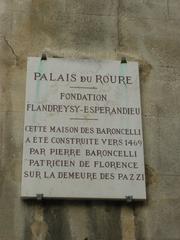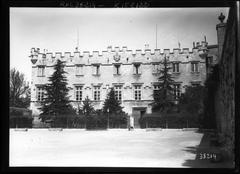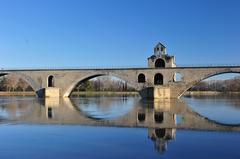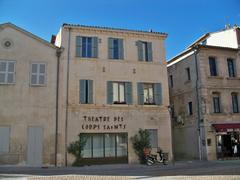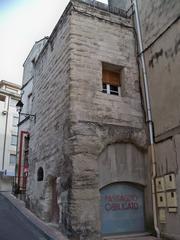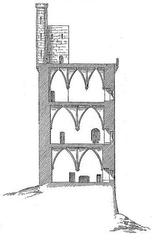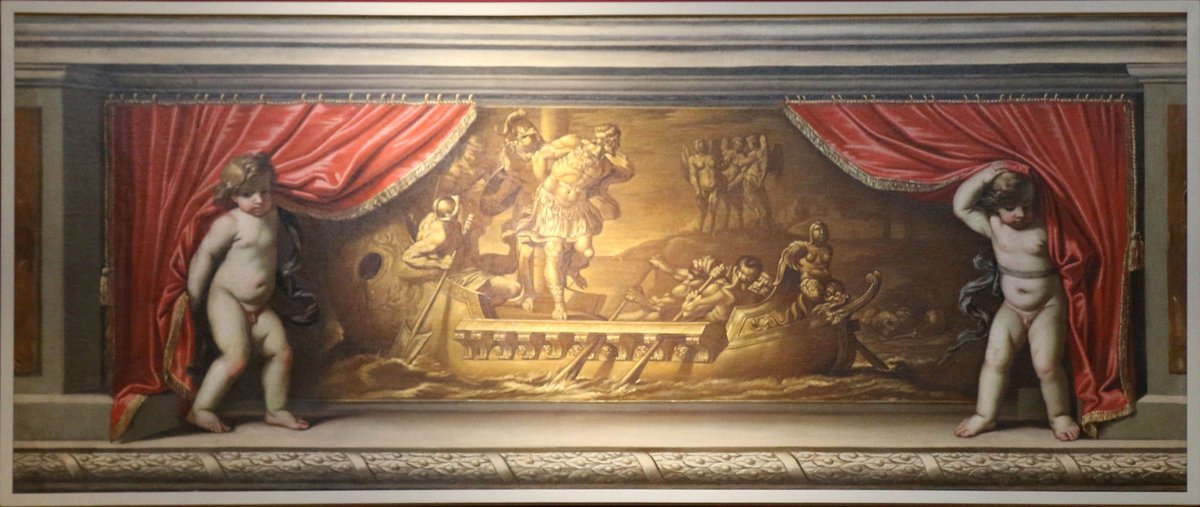
Visiting Musée Lapidaire: Hours, Tickets, Tips, and More
Date: 25/07/2024
Introduction
Nestled in the heart of Avignon, France, the Musée Lapidaire is a treasure trove for history enthusiasts and curious travelers. Housed in a 17th-century Jesuit church, this museum offers a fascinating journey through ancient civilizations, showcasing an impressive array of artifacts from Greek, Roman, Etruscan, Gallo-Roman, Early Christian, and Gallic cultures. This comprehensive guide aims to provide you with all the necessary information to make the most of your visit. From detailed insights into the museum’s rich history and architectural significance to practical visitor information such as opening hours, ticket prices, and accessibility, this guide covers it all. Whether you’re a history aficionado, an archaeology enthusiast, or a casual tourist, the Musée Lapidaire promises an enriching and educational experience (History Hit, Wikipedia).
Table of Contents
- Introduction
- History of Musée Lapidaire
- Collections and Exhibits
- Temporary Exhibitions and Educational Activities
- Visitor Information
- FAQ
- Conclusion
Discover the Musée Lapidaire
History of Musée Lapidaire
Origins and Architectural Development
The Musée Lapidaire in Avignon, France, is an annex of the Musée Calvet, housing the city’s archaeological collections. The museum is situated in the former Jesuit church, known as the Chapel of the College, whose plans were initially drawn up in 1616 by Étienne Martelange. However, the construction was ultimately entrusted to François de Royers de la Valfenière from 1620 onwards. De la Valfenière was responsible for elevating the walls up to the grand cornice of the nave (Wikipedia).
The building itself is a testament to baroque architecture, reflecting the stylistic preferences of the 17th century. The chapel was completed thanks to a legacy from Cardinal de Joyeuse, a significant benefactor whose contributions were crucial to the project’s completion. The structure was officially classified as a historical monument on June 21, 1928, ensuring its preservation and recognition as a site of cultural and historical importance (History Hit).
Transformation into a Museum
The transformation of the Jesuit chapel into the Musée Lapidaire began in 1933 when the archaeological collections of the Musée Calvet were relocated to this site. This move was part of a broader effort to preserve and showcase the city’s rich archaeological heritage. The museum’s collections span several epochs, including Prehistory, Greek Antiquity, Etruscan Antiquity, Roman Antiquity, and Gallo-Roman art, as well as Paleo-Christian Antiquity (Wikipedia).
Collections and Exhibits
Greek Collections
The Greek collection at the Musée Lapidaire is a testament to the artistic and cultural achievements of ancient Greece. Visitors can explore a variety of artifacts, including statues, steles, reliefs, and vases. These items provide a glimpse into the daily life, religious practices, and artistic endeavors of the ancient Greeks. Notable pieces include intricately carved statues that depict gods, goddesses, and mythological scenes, as well as steles that were used as grave markers. The vases, often adorned with detailed paintings, offer insights into the techniques and themes favored by Greek artisans (Wikipedia).
Roman Collections
The Roman section of the museum is equally impressive, featuring a wide array of sculptures, bas-reliefs, and everyday objects. Roman art is known for its realism and attention to detail, and this is evident in the museum’s collection. Visitors can admire statues of emperors, gods, and notable figures, as well as intricate bas-reliefs that once adorned public buildings and monuments. The collection also includes various household items, such as lamps and utensils, which provide a window into the daily lives of ancient Romans (Avignon Tourisme).
Etruscan Artifacts
The Etruscan collection at the Musée Lapidaire is a highlight for many visitors. The Etruscans, who predated the Romans in Italy, were known for their unique artistic style and advanced craftsmanship. The museum’s collection includes a number of Etruscan funerary monuments, which are particularly noteworthy. These monuments often feature detailed carvings and inscriptions that provide valuable information about Etruscan beliefs and customs. Additionally, the collection includes various objects such as vases and jewelry, which showcase the Etruscans’ skill in metalwork and pottery (Wikipedia).
Gallo-Roman Artifacts
The Gallo-Roman collection bridges the gap between the Roman and Gallic cultures, highlighting the unique blend of influences that characterized this period. Among the most striking pieces are the grotesque masks and figurines, which offer a fascinating look at the artistic expressions of the time. These items often depict mythical creatures and deities, reflecting the religious and cultural beliefs of the Gallo-Roman people. The collection also includes various everyday objects, such as pottery and tools, which provide insights into the daily life and technological advancements of the era (Lonely Planet).
Early Christian Art
The museum’s collection of Early Christian art is a testament to the spread of Christianity and its impact on art and culture. This section includes a variety of artifacts, such as sculptures, inscriptions, and architectural fragments, which illustrate the early development of Christian iconography and symbolism. Notable pieces include intricately carved sarcophagi and reliefs that depict scenes from the Bible, as well as inscriptions that provide valuable information about early Christian communities and their beliefs (Wikipedia).
Gallic Artifacts
The Gallic collection at the Musée Lapidaire offers a fascinating look at the art and culture of the ancient Gauls. This section includes a variety of objects, such as statues, reliefs, and everyday items, which provide insights into the lives and beliefs of the Gallic people. Notable pieces include the Lauris-Puyvert Stela, a prehistoric limestone stela that is considered one of the highlights of the museum’s collection. This stela, along with other artifacts, offers a glimpse into the artistic and cultural achievements of the ancient Gauls (Wikipedia).
Temporary Exhibitions and Educational Activities
In addition to its permanent collections, the Musée Lapidaire hosts temporary exhibitions on various topics. For instance, past exhibitions have explored themes such as the diffusion of Egyptian and Alexandrian cults in the Roman world, Coptic Egypt, and Muslim Egypt. Another notable exhibition focused on the “Laraire d’Esprit Calvet,” highlighting the religious practices of ancient civilizations (Wikipedia).
The museum also engages in educational activities, offering conferences and workshops, particularly aimed at school audiences. These initiatives are designed to enhance public understanding and appreciation of the archaeological heritage preserved within the museum’s walls (Wikipedia).
Visitor Information
Opening Hours
The Musée Lapidaire is open from June 1 to September 30, and from October 1 to October 31, with closures on Mondays. From November 1 to December 31, the museum remains closed on Mondays and is exceptionally closed on December 25. The museum is typically open daily from 10:00 AM to 1:00 PM and from 2:00 PM to 6:00 PM. It’s advisable to check the official website for the most current information before planning your visit.
Admission Fees
Admission to the museum is free, allowing visitors to explore the permanent collections without any cost (Provence Guide).
Accessibility
Musée Lapidaire is housed in a historic building, which may present some accessibility challenges. However, efforts have been made to accommodate visitors with disabilities. There are ramps and elevators available, but it is recommended to contact the museum in advance to ensure that specific needs can be met. More information on accessibility can be found on the museum’s accessibility page.
Guided Tours and Audio Guides
To enhance your visit, consider joining a guided tour or using an audio guide. Guided tours are available in multiple languages and provide in-depth insights into the museum’s extensive collection of antiquities. Audio guides can be rented at the entrance for a small fee, offering a self-paced exploration with detailed commentary on key exhibits. Check the museum’s guided tours page for schedules and booking information.
Photography and Etiquette
Photography is generally allowed in Musée Lapidaire, but the use of flash and tripods is prohibited to protect the artifacts. Visitors are encouraged to be respectful of the exhibits and other guests by keeping noise to a minimum and not touching the displays. For specific photography guidelines, refer to the museum’s visitor information page.
Nearby Attractions
While visiting the Musée Lapidaire, you can also explore other historical sites in Avignon. The Palais des Papes, Pont Saint-Bénézet, and the Avignon Cathedral are all within a short distance, offering further insights into the rich history of the region. Consider purchasing a combined ticket for multiple sites to save money and streamline your sightseeing. More details can be found on the Avignon tourism website.
Dining and Refreshments
While Musée Lapidaire does not have an on-site café, there are numerous dining options in the surrounding area. From quaint bistros to fine dining restaurants, Avignon offers a variety of culinary experiences. For a quick bite, try one of the local bakeries or cafés. For recommendations, visit the Avignon dining guide.
Souvenirs and Shopping
The museum shop offers a selection of books, replicas, and unique souvenirs related to the museum’s collection. It is a great place to find a memento of your visit or a gift for someone special. Additionally, the nearby streets of Avignon are lined with charming boutiques and artisan shops where you can find local crafts and products. For more shopping options, check the Avignon shopping guide.
Safety and Security
Musée Lapidaire takes the safety and security of its visitors seriously. There are security checks at the entrance, and large bags and backpacks are not allowed inside. It is recommended to travel light and keep personal belongings secure. For the latest safety guidelines, visit the museum’s safety information page.
Language and Communication
While French is the primary language spoken in Avignon, many staff members at Musée Lapidaire speak English and other languages. Signage and informational materials are often available in multiple languages, making it easier for international visitors to navigate and understand the exhibits. For language assistance, inquire at the museum’s information desk.
Special Events and Exhibitions
Musée Lapidaire frequently hosts special events, temporary exhibitions, and educational programs. These events provide unique opportunities to engage with the museum’s collection in new and exciting ways. To stay updated on upcoming events and exhibitions, check the museum’s events calendar.
Transportation and Parking
The museum is easily accessible by public transportation, with several bus lines stopping nearby. For those driving, there are parking facilities within walking distance, though spaces can be limited during peak times. For detailed directions and parking information, visit the Avignon transportation guide.
Preparing for Your Visit
To make the most of your visit to Musée Lapidaire, it is advisable to plan ahead. Wear comfortable shoes, as you will be doing a fair amount of walking. Bringing a small notebook or using a note-taking app can be helpful for jotting down interesting facts and observations. Lastly, consider downloading a museum map from the official website to familiarize yourself with the layout before you arrive.
FAQ
Q - What are the Musée Lapidaire visiting hours?
A - The museum is open from June 1 to September 30, and from October 1 to October 31, with closures on Mondays. From November 1 to December 31, the museum remains closed on Mondays and is exceptionally closed on December 25. It is typically open daily from 10:00 AM to 1:00 PM and from 2:00 PM to 6:00 PM.
Q - How much are tickets to Musée Lapidaire?
A - Admission to the museum is free.
Q - Are guided tours available at Musée Lapidaire?
A - Yes, guided tours are available in multiple languages. Audio guides can also be rented at the entrance.
Q - What is the best way to get to Musée Lapidaire from Paris?
A - The fastest train route passes through Lyon and takes approximately 3 hours and 30 minutes.
Q - Is the Musée Lapidaire accessible to visitors with disabilities?
A - Yes, the museum is equipped with facilities to accommodate visitors with disabilities.
Conclusion
The Musée Lapidaire in Avignon stands as a testament to the rich history and cultural heritage of ancient civilizations. With its extensive collections spanning various epochs and cultures, the museum offers a unique and educational experience for all visitors. Whether you’re exploring the intricacies of Greek vases, admiring Roman sculptures, or delving into the funerary practices of the Etruscans, the Musée Lapidaire provides a comprehensive look into the past. The museum’s commitment to accessibility, educational programs, and temporary exhibitions ensures that there is always something new and engaging to discover. As you plan your visit, don’t forget to explore nearby historical sites in Avignon and take advantage of the museum’s many amenities to enrich your experience further. By immersing yourself in the rich history preserved within the Musée Lapidaire, you’re sure to leave with a deeper appreciation for the ancient world and its enduring legacy (Provence Guide, Avignon Tourisme).
References
- History Hit, 2023
- Wikipedia, 2023
- Provence Guide, 2023
- Avignon Tourisme, 2023
